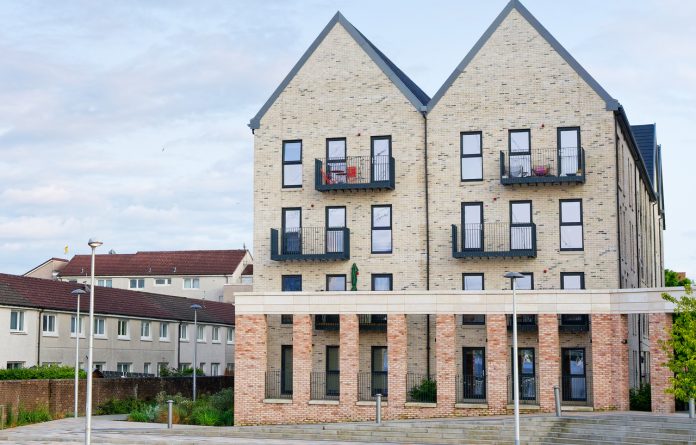The incoming Future Homes Standard offers an opportunity for the construction industry to write a new narrative around green housing shaped around its premium benefits, writes Ben Standing, partner at Browne Jacobson, and Felicity Zakers, Associate
Building 1.5 million new homes in five years while meeting net zero targets by 2050 are two major challenges facing Britain as it bids to embark on a clean growth strategy.
Yet rather than addressing housing shortages and climate commitments in tandem with one another, government policy treats these as separate, competing priorities.
The built environment accounts for roughly a third of the UK’s greenhouse gas emissions. Building homes that require expensive retrofitting within years of completion would be a costly mistake, wasting both resources and public support for green policies.
For the construction industry, meanwhile, there is an opportunity to reframe the narrative around what we mean by green housing as high-quality, efficient homes.
Reframing the message
Political sentiment around environmental policies is shifting. Reform UK’s electoral gains reflect growing public fatigue with climate-focused messaging, while Labour’s former Prime Minister Sir Tony Blair has warned that net zero policies are moving faster than public acceptance.
The solution isn’t abandoning sustainability but changing how we talk about it. Instead of emphasising carbon targets, the focus should be on immediate benefits: lower energy bills, enhanced comfort, and potential income generation.
Research supports this approach. Oxford Economics found consumers are willing to pay 3.4% more for highly energy-efficient homes, while a Censuswide survey showed 57% would pay extra for properties with renewable energy features like solar panels or heat pumps.
Policy delays hampering progress
The construction industry has been awaiting further details on the Future Homes Standard since its announcement in 2019, with a 2025 implementation date that will be missed.
Progress finally arrived in June this year, when the government confirmed almost all new-build homes must be fitted with solar panels by 2027. While this was welcomed, with only 40% of new English homes currently featuring solar power, according to Solar Energy UK, this is only one piece of the green housing jigsaw.
Other policies that will likely seek to improve heating, hot water systems and heat waste will be set out this autumn, when the Future Homes Standard is published.
New expectations for the role of heat pumps, hydrogen, battery storage and modern construction materials in new homes will help to drive systemic change.
It will also likely add to already high construction and planning costs for developers; however, it is important that the government helps offset some of these increases via streamlined planning processes. Realising these proposals remains difficult.
Building green from the ground up
In the absence of clear standards, voluntary schemes like BREEAM, Passivhaus, and LEED have filled the gap – demonstrating there is a net zero appetite among developers.
Social housing providers are particularly engaged, with Sanctuary’s 178-home Glasgow development meeting Passivhaus standards. Mace’s 853-bed Battersea student accommodation represents the UK’s largest Passivhaus building.
However, green principles remain project-specific rather than pipeline-wide. Green technologies like heat pumps and solar panels remain expensive, while materials and skills are scarce.
Learning from successful transitions
The economics must work for consumers. Retrofitting is consistently more expensive than building sustainably from the start. Incorporating green features during construction creates economies of scale while avoiding the disruption and cost of later upgrades.
The automotive sector offers valuable lessons. Electric vehicle (EV) sales grew sixfold between 2018 and 2024 – not by emphasising climate goals but by highlighting lower running costs.
Housing has witnessed similar transitions. Double glazing, loft insulation, and removing inefficient features became standard not for environmental reasons, but because consumers valued comfort and cost savings. The Russia-Ukraine conflict has accelerated this trend, creating an appetite for measures that provide energy security.
Nearly a third of consumers consider new-build housing “poor quality”, according to a 2023 Chartered Institute of Building survey. Green features offer a chance to rebuild confidence by positioning sustainable homes as premium products.
Homes that maintain comfortable temperatures year-round, provide predictable energy costs, enable overnight EV charging, or generate income through solar exports represent compelling value beyond environmental considerations.
Generating interest around innovative features could also attract workers to the sector. The Construction Industry Training Board estimates 350,000 additional construction workers are needed by 2028 for decarbonisation efforts. The government’s £600 million plan for technical excellence colleges will train 60,000 workers, but more apprenticeships and retraining programmes are needed.
The path forward
The technology exists to build sustainable homes, and political will supports housing delivery. What’s missing is regulation and messaging that connects these objectives with consumer priorities.
Success requires the government to deliver on its Future Homes Standard, developers to embed green principles throughout their operations, and collaborative upskilling efforts across the industry.
But broader than this, we need a more compelling story behind regulation that mandates green housing – one that signals an exciting direction for the housebuilding industry to achieve buy-in from future homebuyers and workers.











